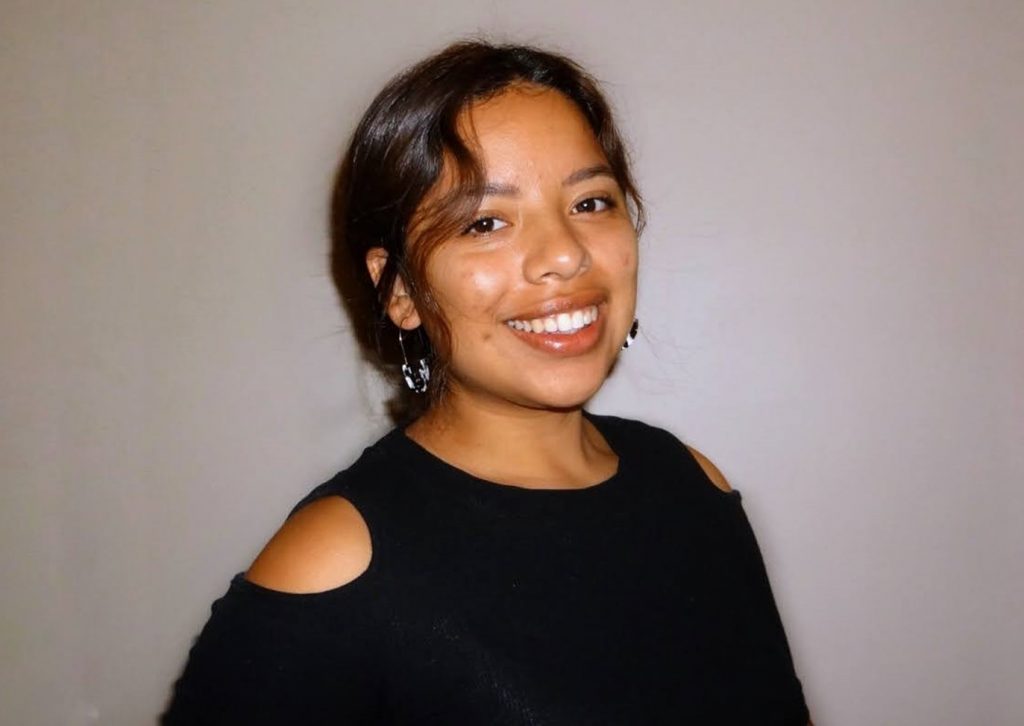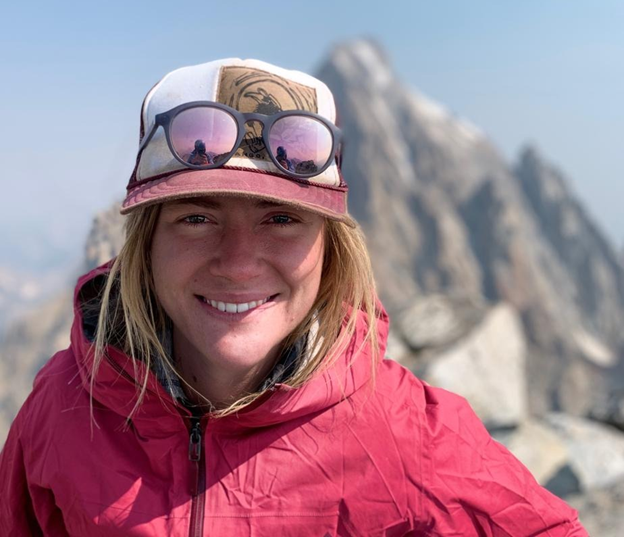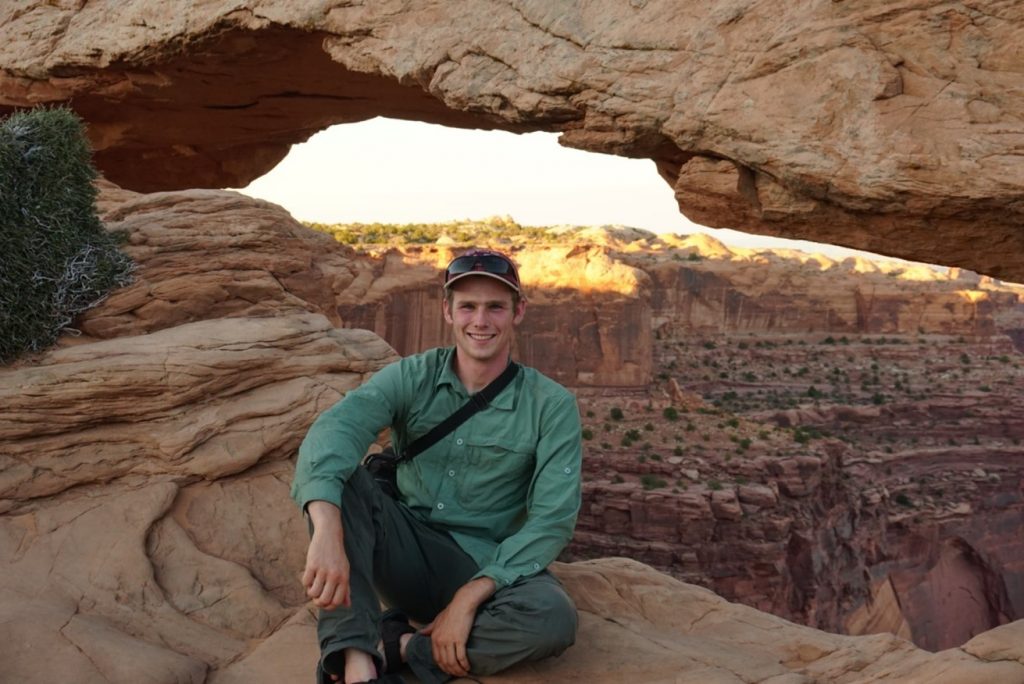Three SIT Ecuador alumni advance their research
Fulbright awards, thesis bring opportunities to dig deeper
July 12th, 2022 | SIT Study Abroad

EXAMINING INDIGENOUS RESISTANCE TO EXTRACTIVE INDUSTRIES
Through SIT Ecuador, I partnered with Alexandra Almeida at Acción Ecológica to complete research on the negative impacts of the April 2020 oil spill in the Coca and Napo rivers on the local indigenous communities. This experience led me to focus my thesis research at Pomona College on Indigenous resistance to extractive industries in Ecuador, which have increasingly driven deforestation, human rights abuses, and public health crises, and have negatively impacted Indigenous peoples’ territories and cultures.
By Mariana Gonzalez Vega
SIT Ecuador: Comparative Ecology & Conservation Spring 2021
... if it is proven the Ecuadorian legal system is transparent and protects the rights of Indigenous communities, large corporations will be less bold to violate Indigenous rights.
Mariana Gonzalez Vega
Recent studies have found that Indigenous peoples are “exceptionally good” at protecting the biodiversity of their land. Ecuadorian Indigenous advocacy groups have mobilized against the nation’s neoliberal policies to protect their rights, the environment, and their way of life. A few ways they have accomplished this is through protests, demonstrations, disrupting oil operations, all despite facing police brutality and repression against demonstrators.
In 2019, the Waorani organized against the state and sued them for selling their land to oil companies without prior conversations with the local Indigenous communities (right to prior consultation). On April 26, they won the landmark case protecting 7 million acres of rainforest homelands that would have otherwise been opened to oil production plants, oil wells, and the construction of oil pipelines. This would unquestionably have polluted the air, water, and soil of the Amazon, in addition to increasing deforestation for the necessary oil production infrastructure.
The following year, at the beginning of the pandemic (April 2020), there was an oil spill on the Coca River caused by a ruptured pipeline, the contamination was reported to have reached as far as Peru. The Amazonian rivers are the lifeline of the forests, and the loss of the Coca river as a source of clean water or food has had an immeasurable impact on the local ecosystems and communities. The Kichwa people brought a lawsuit against the Ecuadorian government and oil companies over their liability in the country’s biggest oil spill in more than 10 years.
The appeal was rejected in lower courts, which goes against various Indigenous protections in the Constitution and against the constitutional rights of Nature itself. Here we have two Indigenous-resistance environmental cases over two Amazonian environmental and cultural threats. One receives a favorable outcome and the other does not.
Which factors impacted the differential results of these two cases? I will break down factors that potentially influenced the outcome of these two cases: international environmental and Indigenous law, domestic law and courts, the Ecuadorian constitution, social movements, and domestic politics.
After the substantial success of the Waorani people, there was a lot of hope that it would set a new precedent for Indigenous people to defend their rights through the Ecuadorian legal system. Measures such as the 2010 Transparency International Corruption Perceptions Index, which ranked Ecuador 146/178 in 2009, demonstrate Ecuadorians do not hold much trust in the legal system. This is why Indigenous activists often use methods outside the courts to defend their rights as aforementioned: protests, demonstrations, disrupting oil operations.
These methods can be very dangerous for activists involved as they face abuse, legal persecution, police brutality, and sometimes incarceration or death.
By identifying which factors were most influential in the positive outcome in the Waorani case, Indigenous activists can leverage that information to their advantage. From a financial position, Ecuadorian Indigenous environmental activists can’t “buy” political clout like large oil and mining international corporations. From an optimistic perspective, if it is proven the Ecuadorian legal system is transparent and protects the rights of Indigenous communities, large corporations will be less bold to violate Indigenous rights.
The research may highlight faults in the Ecuadorian legal system that will pave the way for justice reform. I predict it will highlight the strengths in the organization of the Waorani or strengths in the tactics of the Waorani legal team, which other Indigenous groups may replicate in their legal cases.

A RARE FOCUS ON THE PARAMO PEATLANDS
By Lenka Doskocil
SIT Ecuador: Comparative Ecology & Conservation Spring 2020
I remember the first time I saw the páramo: vast and rolling, with a deep power, this region instantly captured my imagination. Tall, jagged mountains presiding over meadows and peatlands nestled in glacial valley bottoms and small depressions, the resemblance is so like the alpine of my Colorado home that my heart ached. But the páramo differs vastly from Colorado’s alpine ecosystems: different plant communities, different soil properties, different hydrology, and different histories.
Many mountain communities, especially large urban centers such as Quito and Cuenca in Ecuador, rely on the slow release of water from the páramo’s high-elevation grassland ecosystem.
Lenka Doskocil
Many mountain communities, especially large urban centers such as Quito and Cuenca in Ecuador, rely on the slow release of water from the páramo’s high-elevation grassland ecosystem—famous for high water retention capacity and elevated levels of endemism—to maintain sufficient streamflow and a year-round water supply.
Rapid glacial melt and human population growth have triggered immense concern over the future of water resources in Andean communities. This threat has a distinct potency in Ecuador, where more than half the population depends on water originating from páramo regions. Peatlands make up roughly a quarter of this system. They play significant roles in the famed hydrologic properties of the páramo and act as invaluable carbon storage systems.
Colorado, too, contains networks of peatlands (called fens) that function as critical carbon and water storage systems, wildlife habitat, and protectors of biodiversity. For years, I have worked on restoration and research projects involving mountain wetlands, including fens, and the opportunity to explore similar ecosystems in the páramo was exciting to me.
I was in Ecuador for the SIT Comparative Ecology and Conservation program in spring 2020 and was forced to return home due to the onset of COVID-19. As such, I completed my independent study project (ISP), an integral part of SIT’s curriculum, remotely. I began looking for ways to return to the páramo and found the Fulbright U.S. student program.*
I received a research grant to study peatlands in Ecuador under the mentorship of Dr. Esteban Suárez, a professor at Universidad San Francisco de Quito and a páramo ecosystem expert. I will be assisting in his lab on three different projects: active peatland restoration techniques, peatland characterization and mapping, and quantifying carbon dioxide and methane fluxes. Research on páramo peatlands has been sparse when compared with research efforts in other neotropical ecosystems, despite their significance.
I will be working with Dr. Suárez and his team to test two planting techniques in a peatland near the Antisana volcano where the introduction of pasture grasses has proved stubborn. I will also be helping with field data collection on a nationwide peatland mapping and characterization effort. The national vegetation map for Ecuador does not differentiate peatlands from the surrounding paramo, which results in a lack of protection and understanding for these critical systems. The carbon and methane fluxes project compose a part of this national effort, and will compare greenhouse gas fluxes from impacted, resorted, and intact peatlands.

CONNECTING LAND USE AND CLIMATE CHANGE IN CHILE
By Sage Fox
SIT Ecuador: Comparative Ecology & Conservation 2018
Ever since studying abroad with SIT Ecuador in 2018, I wanted to return to South America as a researcher. After completing my bachelor’s degree, I applied for a Fulbright Open Study/Research grant* in Chile. In fall 2021, I was awarded the grant and I started my year in Chile at the end of February 2022.
My work has been highly varied and incredibly rewarding so far, with everything from field work in remote Patagonian fjords to complex meetings with stakeholders and scientists.
Sage Fox
I am now living in the city of Concepción, working on two large research projects while auditing graduate classes at the Universidad Católica de la Santísima Concepción (UCSC). The research projects are complementary and both are funded by the Chilean government. Taken together, they aim to characterize the value of freshwater provisioning to socioecological systems in northwestern Patagonia, as well as project the threats to water provisioning posed by climate change and land conversion.
The first project seeks to characterize current hydrological signatures of five major rivers, quantify the importance of these rivers’ inputs to biochemical processes and ecological functions in the fjords they drain into, and assess the risk of hydrological signature changes to ecosystems and aquaculture under drought scenarios.
The second project is focused more narrowly on the role of land-use practices in exacerbating or mitigating the impacts of climate change on southern Chile’s aquaculture industry. To that end, the project’s focus is threefold. First is to describe the relationship between river hydrological signature and production success for salmon and mussel farming. Second is to project hydrological signatures under various climate change and land use scenarios. Third is to assess the economic value of water provisioning as an ecosystem service to the aquaculture industry under various land use and climate change scenarios.
Within these broad projects, I am mostly working on river monitoring, economic analysis, water governance, and public outreach dimensions. My work has been highly varied and incredibly rewarding so far, with everything from field work in remote Patagonian fjords to complex meetings with stakeholders and scientists. I am incredibly grateful to both SIT for initially inspiring me to pursue research abroad, and to the Fulbright U.S. Student Program for supporting my experience here in Chile.
*The Fulbright Open Study/Research Award, part of the U.S Student Program, supports U.S. graduate students or recent graduates for one year in conducting thesis and dissertation research, or independent research with audited coursework. These competitive programs offer opportunities for young professionals to network, learn about new cultures, practice a second language, and develop professionally.
